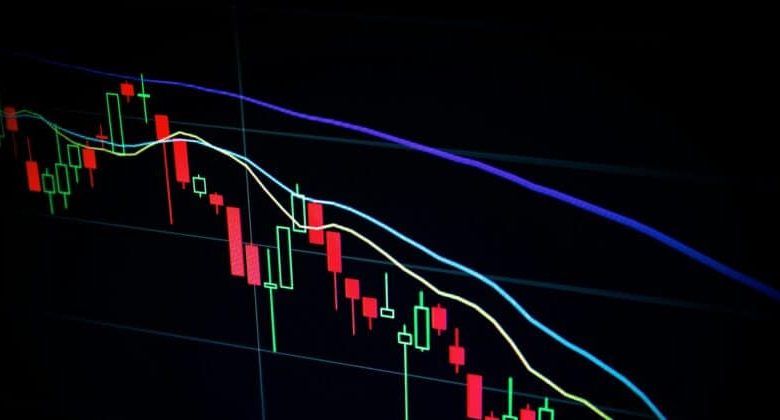A Clear, No-Stress Guide for 2025

If you hold TRX and need dollar stability for trading or payments, you can exchange TRX to USDT in minutes. This guide explains the difference between the exchange USDT to TRX and spot price, how USDT to TRX swaps work, which wallet/network settings to check, and how to avoid the classic errors that cost money.

TRX/USDT chart with cup-and-handle, RSI and MACD indicators.
Who is this for? Anyone who wants a quick Tron — Dollars conversion for hedging, rebalancing, or sending stablecoins without touching a bank card.
Why move between TRX and USDT?
Cut volatility when you need it. During choppy markets, parking funds in USDT helps protect purchasing power.
Pay and settle cheaply. TRON’s TRC20 network is known for low fees and fast confirmations, making USDT on TRON convenient for everyday transfers.
Rebalance quickly. Traders rotate between TRX and USDT to lock in gains or buy dips based on rules instead of emotion.

CryptoQuant chart: USDT transfers on TRON rising 2019–2025, stacked.
Price vs exchange rate: what you actually receive
Two numbers matter:
- Price (or quote): the current spot price of TRX measured in USDT.
- Exchange rate (effective): the outcome you receive after spreads, fees, and slippage at execution.
Because markets move, the effective rate can differ from the headline quote. In calm markets, a floating rate is usually cheaper; during volatility, a fixed rate can protect you from sudden swings.
Step-by-step: how to swap TRX to USDT
Choose TRC20 USDT unless the recipient specifies another network; paste the correct deposit address and pick floating (cheaper) or fixed (certainty) before sending TRX. After broadcasting, save your TXID and wait for confirmations — USDT lands on the chosen network.
- Choose the right network — USDT exists on many chains. If you want the low-fee option most people use for payments, select TRC20 USDT on TRON. If your recipient expects ERC-20 or another chain, decide that now — addresses are not interchangeable.
- Prepare your receiving address — Copy the USDT (TRC20) deposit address from your wallet or exchange. Double-check the network label says TRON/TRC20 and, if your destination requires it, include any memo/tag exactly as shown.
- Start the swap — Pick TRX as input, USDT as output, and enter the amount. Review the rate type (floating vs. fixed) and the estimated arrival.
- Send TRX and wait for confirmations — Transfer the displayed amount of TRX to the deposit address. After the transaction is confirmed, the system routes liquidity and sends out USDT to your destination.
- Verify receipt — Open your wallet and check the USDT balance on the TRC20 network. If the token isn’t visible, add USDT/TRC20 in your asset list.
Example math: If the quote says 1 TRX to USDT = 0.10 and you send 1,000 Tron, your expected result is ~100 Dollars minus fees. Your effective rate equals Dollars received ÷ Tron sent.
When does a TRX to USDT move make sense?
Use USDT for dollar budgeting, payroll, or to sit out volatility; keep TRX for on-chain utility and higher beta exposure. Predefine a rule to avoid emotional trades.
- Budgeting and payroll: If expenses are in dollars, shifting income from Tron to Dollars stabilizes cash flow.
- Risk control: After a strong TRX rally, rotate a slice to USDT to lock gains and reduce drawdown risk.
- Payments and remittances: Recipients who want a dollar peg can accept USDT with minimal friction.
Rule of thumb: Decide in advance — rebalance after 10–20% moves, or ahead of major events, so you’re not trading on impulse.
Costs, spreads, and practical tips
Your real TRX to USDT exchange rate is USDT received ÷ TRX sent after all fees — check that, not just the quote. Execute during off-peak hours, keep a small TRX gas buffer, and send a tiny test before large transfers.
- On-chain fees: TRON’s network costs are typically low, but confirm your wallet has a small TRX buffer for fees.
- Spread & slippage: Wider when volatility spikes or liquidity is thin. Fixed rates can cap uncertainty.
- Platform fees: Compare the effective outcome, not just the headline quote.
Pro tips
- Convert during quieter market hours to keep the TRX to USDT exchange rate close to spot.
- For large tickets, do a test transfer, then the remainder.
- Keep screenshots and TXIDs; they speed up support if anything needs tracing.
USDT — TRX: flipping back to catch opportunities
The reverse flow is similar: choose USDT to TRX, confirm the exchange rate, and send USDT from TRC20. Traders often move back into TRX after pullbacks or when technical signals align with a broader thesis.
Wallet hygiene: avoid the classic mistakes
Always match network and token — TRC20 USDT must go to a TRON address, and include any required memo/tag exactly. Verify the first/last 6–8 address characters and bookmark official wallet/explorer links to dodge phishing.
- Network mismatch. Sending TRC20 to an ERC-20 address (or vice versa) can lead to loss. Always match the network field on both sides.
- Missing memo/tag. Some exchanges require a memo/tag for Dollars deposits. If requested, it’s mandatory.
- Phishing pages. Bookmark your wallet and explorer; avoid links from DMs.
- Insufficient gas. Keep a small Tron balance to cover future transfers, even after converting to Dollars.
Treat every transfer as irreversible. Verify the first and last characters of addresses; slow is smooth, smooth is fast.
New to TRON addresses and TRC20?
If you’re setting up your first TRC20 wallet or unsure how addresses work across networks, read: “What Is TRC20 and How to Get a TRC20 Wallet Address?”. It explains networks, fees, and safety checks in plain language.
FAQ
What affects the TRX to USDT price intraday?
Market sentiment, liquidity conditions, and TRON-ecosystem headlines.
Is the USDT to TRX exchange rate the same everywhere?
No. Liquidity routes and fees differ. Always compare the effective result: coins received vs. coins sent.
How long does a typical swap take?
Usually shortly after the incoming transfer confirms and the route fills. Volatility and network load can add a few minutes.
Can I send from an exchange and receive to self-custody?
Yes — just ensure the receiving address supports Dollars on TRON (TRC20) and include any required memo/tag.
Summary
Moving between Tron and USDT is straightforward once you know the difference between price and the exchange rate, how network selection works, and which fees to expect. Double-check addresses, keep a TRX gas buffer, and execute during calmer periods for better outcomes.




